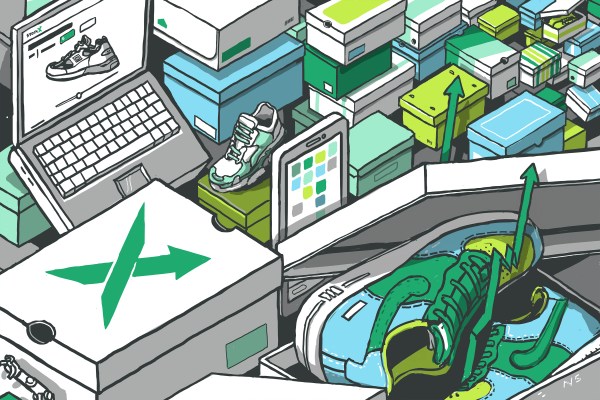Before StockX, sneaker buyers had eBay, campouts at sneaker stores and internet forums as avenues to connect with other enthusiasts and find the most desired shoes. Five years later, the data-based secondary marketplace’s impact is pervasive across tech, secondary marketplaces, the business of sneakers, entrepreneurship, hype culture or even just retail stores as a whole.
Instagram brought sneaker culture to the masses, and so timing was on StockX’s side for its 2015 launch, specifically with their focus on hype footwear just as it catapulted into the mainstream.
The company’s timing was keen, riding the wave of Instagram’s rise while bringing a marketplace mechanism to the surging popularity of this category. Yet, StockX is not alone in targeting this increasingly lucrative sector. E-commerce startups and tech companies have sprouted up to target this connected cultural consumer, and StockX has had to run quickly to maintain its product and marketplace lead. Meanwhile, external changes can have large effects on the prices of sneakers and Gen Z is increasingly determining the future of this market. It’s a fast-moving business, and how StockX leads and competes is critical to understanding its future.
Sneaker culture filtered by Instagram
While sneaker culture had long been vibrant, Instagram and social media allowed worldwide access to subcultures like sneakers and streetwear and ushered them into the mainstream. Sneaker conversations and communities that were once hosted in online forums like NikeTalk, Reddit and Kicks On Fire’s Twitter feed began to spill over onto Instagram around 2013 as the platform grew.
“A scroll through Instagram in the morning — depending on what the algorithm gives you and who you’re following — without reading a single word can give you a peek into what’s happening, and in this case, it’s what’s happening within the global sneaker community, which Instagram not only brought together, [but] in a sense, created,” sneaker journalist Russ Bengtson mused.
He goes on to say how it amplified the community around sneaker stores as well. “Before Instagram, maybe you only heard someone with a job there or of someone who actually had a pair of the shoes, but now, without ever going into the city where the shop is based, you can see what that shop has on its shelves, you can see the outside of the shop, you can actually talk to the people who run it or the people who design things for it. You can be a more integrated part of that community without leaving your house.”
Instagram brought sneaker culture to the masses, and so timing was on StockX’s side for its 2015 launch, specifically with their focus on hype footwear just as it catapulted into the mainstream. The company offered the easiest entry point for outsiders to purchase with its bid/ask format, its one-click buying and selling as well as its authentication procedures. With each purchase, outsiders who knew little about the sneaker market became that much closer to belonging to a culture that had previously set such high barriers to entry.
StockX is to hype trends as Instagram is to popularity. The “best” product doesn’t necessarily reflect the highest price point. Instead, it’s representative of the most demand by the masses, and the platform offers data on how the hype translates into dollars.
“Instagram, and other platforms, have been key to the demand side of the equation being able to highlight items that represent brand heat and influence in the industry. We are a perfect reflection as a platform of what’s happening in current culture,” StockX CEO Scott Cutler says.
Where StockX fits in the business of sneakers
That combination of popularity and hype trends has created a massive economy. In 2014, co-founder and former CEO of StockX Josh Luber said eBay’s sneaker business totaled $338 million, which was 31% higher than 2013. By spring of 2015, the secondary sneaker market was reportedly estimated to be worth $1 billion. In total, the U.S. athletic footwear industry was worth $17.2 billion and $17.5 billion in 2015 and 2016, respectively, and by 2017, it grew to $19.6 billion. There’s no doubt the sneaker community was spending the money in a market with a lot of risk, rapid growth and very few safeguards or price regulations.
With so much money at stake, it’s not surprising that a bevy of companies have targeted the category. Perhaps no marketplace has had the longevity of eBay, which has always been a marketplace for everyone and everything, with sneakers making up only a fraction of its transactions. Education is key and barriers to entry for the platform are high though: Sellers need to build a positive reputation, and in order to shop for sneakers, buyers need to be sufficiently up to speed on what to look for in terms of fakes, scams and pricing.
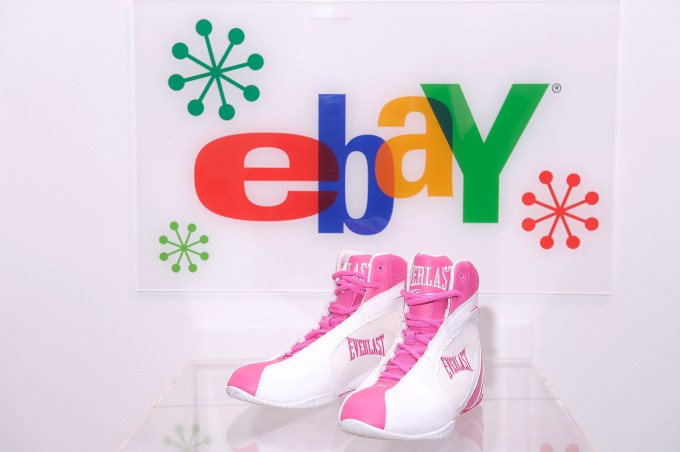
TV personality Kim Kardashian’s sneakers up for auction inside the eBay Holiday Store on November 19, 2009 in New York City. Image Credits: Michael Loccisano/Getty Images for eBay
For several entrepreneurs, the category seemed prime for a solution designed exactly for the challenges of selling sneakers online. Grailed, the men’s marketplace for fashion enthusiasts, launched in 2014, and within months of StockX’s launch in 2016, it already had 350,000 users in the critical 18-35-year-old segment. Grailed became an easy entry point for the casual shopper to get their feet wet browsing high fashion and hype gear. Much like eBay, seller feedback and account reputation hold weight. The platform also does what they call digital authentication “using a combination of human and machine moderation,” according to the site. The company raised $15 million in 2018 led by Thrive Capital.
Meanwhile, GOAT, which launched in the summer of 2015 as an e-commerce service and operates with a similar buyer and seller model to StockX (but without the data and allowing used shoes), has found traction. The company merged with New York City’s sneaker consignment store Flight Club in 2018 while raising $60 million in funding. Foot Locker later sunk $100 million into the newly minted GOAT Group at the top of 2019. This came just months after online luxury platform Farfetch acquired sneaker retailer Stadium Goods for $250 million dollars.
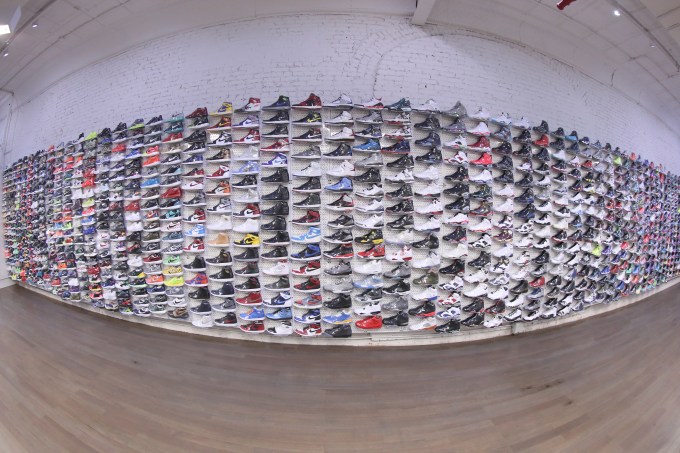
Stadium Goods store in 2016 in New York City. Image Credits: Bennett Raglin/Getty Images for Music Choice
While e-commerce has been a heavy focus for startups in sneakers, countless sneaker tech companies have popped up over the years as well. Some entrepreneurs have built on top of the wide number of channels for inventory. For instance, Suplexed is a platform that aggregates all the marketplaces for the shoe you’re looking for and compares its prices on one page. SoleSavy is a membership-based sneaker community, and it’s doubling down on content, aiming to fill the gap between hype-centered sneaker media and business or tech sites that are relatively new to covering sneaker culture.
For all the entrants though, StockX became the first marketplace to offer the combination of in-person authentication of goods, anonymity to shoppers and buyers, and transparency on pricing and transaction history. “If you look at how people purchased prior to StockX, it was, ‘Do I want to buy this listing from Katy or this one from Rae? Why is hers $700, but yours is $300?’ When you have lack of transparency, you end up with essentially a manipulation of pricing,” StockX COO Greg Schwartz pointed out. “You might be paying $300 more because someone has 500 five-star ratings, not because the value of the good is really worth $500 more.”
As we saw in part two of this EC-1, StockX has expanded from four authenticators at their Detroit HQ to around 300 dispersed between their nine authentication centers worldwide and one drop-off location in New York City, a key aspect of its business. It took nearly five years for eBay to establish any authentication for the sneakers on its marketplace, despite those early 2014 numbers and the opportunity that existed before StockX was even introduced to the market. In October 2020, the platform launched a third-party service to authenticate new sneakers over $100 and used pairs over $300. Once a shoe is deemed real, the service gives it a little blue check of approval much like the ones on verified Twitter and Instagram accounts.
The service is in its infancy, however, and other marketplaces have proven skeptics right to not blindly trust authentication. For example, just months after being christened a unicorn and filing its IPO, The RealReal was accused of leveraging untrained, hourly copywriters to authenticate its products. A late 2019 report by Washington, D.C.-based investigative news and legal analysis organization The Capitol Forum accused The RealReal of being dishonest — at best — about their authentication services, claims the company responded to in an extensive statement. The company is still battling to come back from the news, and is seemingly still struggling with fakes being sold to their users. Two years later, its stock remains parked at roughly its IPO price.
These marketplaces have publicly struggled to keep up with authenticating the growing range of products they offer on their platforms, and that has offered an opportunity for independent authentication apps. In 2018, sneaker convention Sneaker Con launched Legit App or the self-proclaimed “Wikipedia of authentications.” They provide a catalog of guides to determine whether popular sneakers, streetwear and high-end designer items are real or fake.
CheckCheck launched in mid-2020, and the service will determine if shoes are replicas or real in 30 minutes or less for $1 per verification. Aligned with the name, the service leverages advanced AI and a two-person authentication process to determine the status of a user’s shoes.
Hype by the numbers
StockX displays the monetary result of what happens in current culture. Shirod Ince has been reselling sneakers for nearly a decade. He prefers to sell outside of the platform through his own personal network he’s built over the last 10 years, but he also always keeps track of what’s trending and how that impacts the market.
“I try to stay pretty active on Twitter and see what NBA players are wearing,” he says. “Somebody like P.J. Tucker — he’s somebody who can wear any kind of shoe and the next day it’ll be trending because people want that shoe.”
StockX’s senior economist, Jesse Einhorn, says he’s often asked whether things that happen in the real world impact market prices. He says that it’s pretty infrequent. As an example, “Kanye will fire off an ill-advised tweet and the obvious question will be how did this affect Yeezy sales? I’ll just say nine times out of 10, it doesn’t really affect the market because the market is so big, so fast and so liquid that it’s really hard for these real-world events to move the needle.”
However, price volatility does happen and there have been three recent instances that have impacted not only traffic but sales as well, and have even had a lasting impact on pricing.
Of any cultural moment in the past five years of StockX’s existence, Einhorn points to the weeks we all were sitting home early in the pandemic as the Michael Jordan documentary “The Last Dance” aired as the best example of how the marketplace changes in real time.
“After it premiered and every day a new episode came out, we saw a huge spike in Jordan prices on average. Jordan sales went up over 40% because of the documentary and prices also really took off,” he says.
Before the doc, average Jordan 1 sales saw little volatility throughout the months prior. “Right after the documentary aired, for the next several months, we saw huge gains across the board in virtually every single OG Jordan. In some cases, prices doubled or more because of “The Last Dance,” which is really just incredible.”
He’s also found the data around Jordan Brand as a whole to be particularly captivating. “Half the people that shop on StockX have never even seen Michael Jordan play,” Einhorn points out in questioning whether Gen Z is dictating the trends. “That always kind of surprises me that, yes, young people are driving this, but they also have a reverence for history and the preferences of older generations. For a brand like Jordan, that’s really what drives their continued success. They resonate across generational lines.”
In addition to the Jordan documentary bump, two other events have moved prices. The untimely passing of Kobe Bryant in January 2020 led to a rush of demand for related goods following his tragic helicopter accident. It was widely reported that Nike itself completely sold out of Bryant merchandise. Shoes that had been reselling for $750 were suddenly seeing asks upwards of $12,000. Pricing was consistently more volatile in the past year than before 2020.
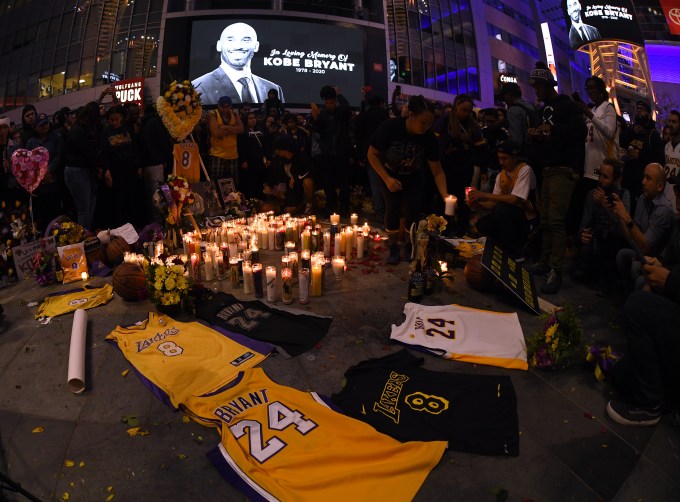
Fans gather at LA Live to pay tribute to Kobe Bryant. Image Credits: Harry How/Getty Images
Lastly, the cameo appearance of the Dior Air Jordan 1s on the husband of Vice President Kamala Harris’s niece Meena Harris during the presidential inauguration on January 20, 2021 led to a flurry of trading activity. “The Dior Jordans were our most visited product that day. Searches for that product went up nearly 300% and the number of new bids for that product doubled,” Einhorn says.
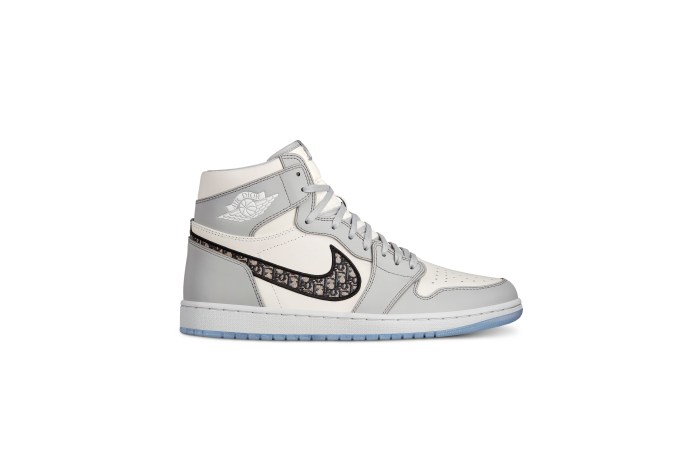
Dior Air Jordan 1s. Image Credits: Nike
For StockX’s five-year anniversary in February 2021, Einhorn’s team pulled numbers to reflect on how the platform’s trends have shifted as the company progressed and the business of sneakers has grown alongside them. While Air Jordan 1s have remained the bestselling Jordan silhouette on the platform, Adidas Yeezy’s resale price has dropped 50% from $611 to $330, which is still over retail.
Notably in that time period, women’s sneaker transactions have grown 1,500%. At this point, the platform sells the same number of women’s exclusives every four hours as it did in all of 2016.
Gen Z’s purchasing power and economic opportunity
That last change points to the changing demographics of sneakers. Without needing a car or having to accommodate a curfew to camp out for shoes, young sneakerheads today really just need WiFi and a PayPal account to get their hands on coveted sneakers. It’s no secret that the origins of StockX are partially tied to co-founder Dan Gilbert’s sons introducing him to the secondary sneaker market.
“StockX is a platform that caters to this next generation of consumers. Seventy percent of our customers are under the age of 35,” CEO Scott Cutler shares, with the majority of StockX app users under the age of 25.
In the past, trends were born from more established adults, and brands would keep their eye on youth culture. Chief Marketing Officer Deena Bahri says Gen Z is actually leading the way and driving influence in a way that was not the case before. “Now it’s been flipped, and it’s truly the Gen Z customer defining trends. The rest of us are looking at them and following, which has been really fascinating to watch.”
As we pass one year since COVID-19 reached the United States and upended everyday life, it’s become increasingly clear that much like the business of sneakers, StockX is here to stay. Throughout one of the most volatile periods in our economy since the birth of the business of sneakers, StockX has not only maintained its position, it has grown.
The platform has seen new users’ ages skew upward in the wake of the pandemic. “We all sort of assume all of our shopping takes place online, and for a lot of people, this wasn’t the case,” Einhorn points out. The pandemic accelerated trends that were already slowly happening. For StockX specifically, this resulted in an influx of older users leveraging them to shop online when they couldn’t be in stores. “We saw a huge increase in the number of people over 45 that were buying and selling,” he said.
With alternate sources of income being more necessary than ever in the wake of COVID-19, COO Schwartz recognizes how the platform’s ease that’s been a draw for Gen Z is also an attractive entry point to other demographics of potential sellers. “The entrepreneurial spirit that’s just driven by a platform where people who are passionate about these items can now make a living off of them without having to have a brick-and-mortar storefront or know how to code — it’s incredible to see that side of the equation.”
For StockX, CEO Cutler says it all goes back to the model of matching buyers and sellers. “You, as a buyer, don’t have to sort through listings. You don’t have to sort through seller ratings, product descriptions, photos. Since we started with a dynamically priced model, you’re always getting the lowest price from the lowest seller who was selling that product anywhere in the world.”
The value in this simplicity exists for users on both sides, though. Cutler points out, “That has created tremendous velocity for sellers as well, who see the trending transaction volume on our platform. For them, this is not only frictionless and seamless, but it’s an economic opportunity.” It’s an economic opportunity that emerged from a subculture, but how does that change the very culture itself? For that, we turn to the fourth and final part of this EC-1.
StockX EC-1 Table of Contents
- Part 1: Origin story
- Part 2: E-commerce authentication
- Part 3: Competitive and consumer landscape
- Part 4: Future and impact
Also check out other EC-1s on Extra Crunch.
Updated April 6, 2021: Updated to clarify that the company’s New York City location is a drop-off center.
